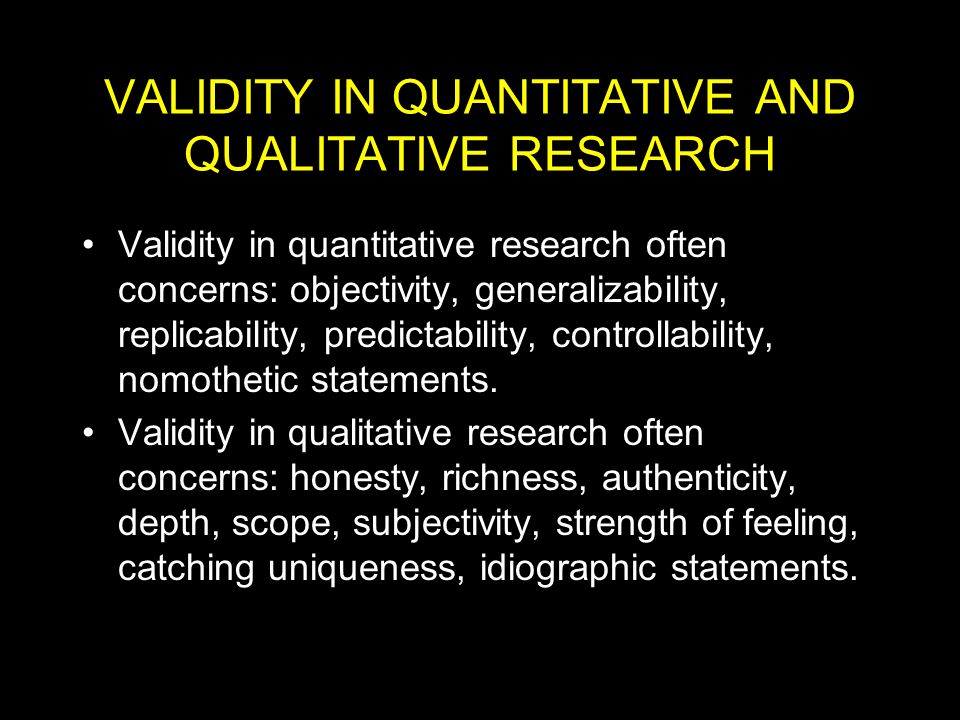


Therefore, it is to be expected that the trustworthiness of the research would have to be measured differently as well. The purpose of the research is different, the methodologies typically used are different, and the way data is collected and analyzed is different. Qualitative research is fundamentally different than quantitative research. How Are Validity and Reliability Applied to Qualitative Research?
Criterion – Does the scale perform as expected in relation to other variables (that were selected as meaningful criteria)?. Content – How representative is the content of the scale that is used to measure?. Construct – What construct or characteristic is the scale measuring?. There are a few questions that can be asked to assess the validity of your research: It helps determine whether the research truly measures what is intended. Validity is the extent to which differences in scale scores reflect true differences among objects on the characteristic being measured – rather than errors. Alternative forms– Two equivalent forms of a scale are developed and then asked and measured twice. Test-retest– Respondents are administered identical sets of scales at different times, ideally under the same conditions. There are a few ways to test reliability, most notably: Reliability is the extent to which a scale produces consistent results if repeated measurements are made on a characteristic. Validity and reliability are collections of approaches that help determine the quality of quantitative research. In this article we will learn what validity and reliability are, how they are measured in quantitative research, and how we can assess the credibility of qualitative research. However, there is also a benefit in assessing quality and trustworthiness in qualitative research. It is necessary to quantify the variability of the measurements from the statistical point of view to increase the validity of a study.Validity and reliability are a common barometer of quality when it comes to quantitative research. If measuring instruments are used, their proper functioning must be verified when questionnaires are included, they must be validated in the language in which they will be applied, they have had a process of adaptation to the language of the participants in the study, and self-applicable ones are preferred. To improve the obtaining of data and to prevent errors, some strategies can be followed: in every study protocol, it is necessary to include the operational definition of the variables the subjects that will carry out the measurements or surveys must be trained. 
In this article, measurement biases will be addressed this type of error has three axes: 1) the research subject, 2) the instrument for the measurement of the variable (s), and 3) those who make the evaluation of the measurement (s). The errors or biases appear in the development of research, are due to methodological problems and, in general, can be grouped into three: selection bias, measurement bias and confusion bias.
#Research validity and reliability free#
It is considered that the results of an investigation will be valid when the study is free of errors. The concept of validity in research refers to what is true or what is close to the truth. Validity and reliability of the measurements.







 0 kommentar(er)
0 kommentar(er)
